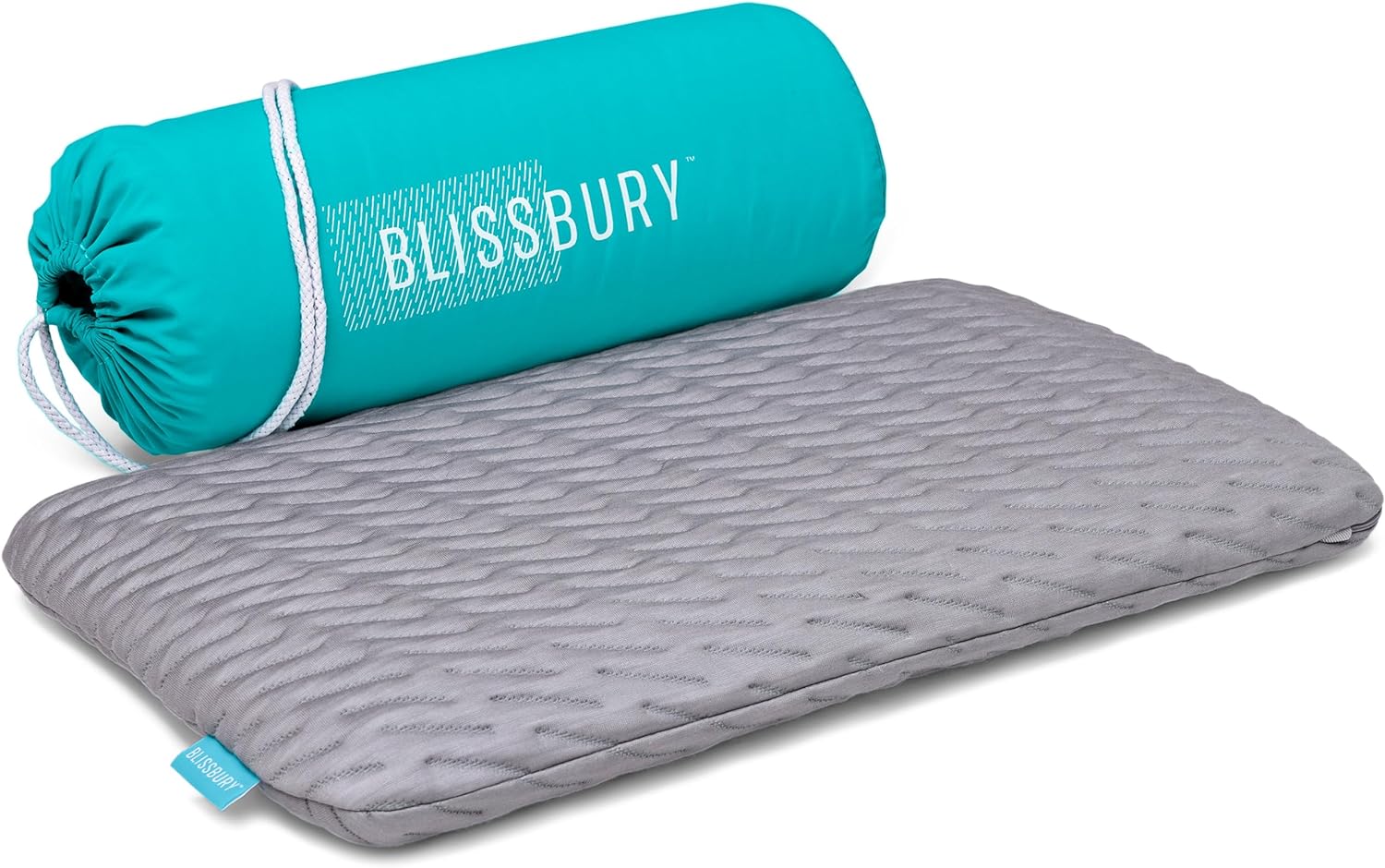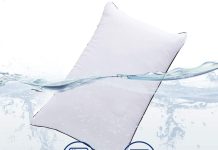Are you tired of waking up with a stiff neck and sore muscles because of your extra firm pillows? We know the frustration, but fear not, for we have the solution! In this article, we will guide you through simple yet effective methods to make your extra firm pillows softer again. Say goodbye to restless nights and hello to a comfortable and rejuvenating sleep experience. Get ready to transform your pillows into plush clouds of coziness!
Review contents
Washing the pillows
Removal of pillow covers
When it comes to washing pillows, the first step is to remove the pillow covers. Most pillow covers are removable and can be easily taken off. By removing the covers, we can ensure that every part of the pillow gets properly cleaned and refreshed.
Choosing the right washing method
Once the pillow covers are removed, it’s important to choose the right washing method for the pillows themselves. Some pillows can be safely machine-washed, while others may require hand washing. Checking the care instructions on the label or consulting the manufacturer’s guidelines can help determine the best washing method for your specific pillows.
Using the right detergent
Using the right detergent is crucial in ensuring that the pillows are properly cleaned without causing any damage. It’s recommended to use a mild, hypoallergenic detergent that is suitable for delicate fabrics. Avoid using bleach or harsh chemicals, as they can degrade the quality of the pillows and cause them to lose their softness.
Setting the appropriate wash cycle
When machine-washing pillows, it’s important to select the appropriate wash cycle. Use a gentle or delicate cycle to prevent excessive agitation that can damage the pillows. Additionally, it’s recommended to wash the pillows with other items, such as towels or bedding, to provide additional cushioning and reduce the impact during the washing process.
Drying the pillows
Preventing clumping
After washing the pillows, the next step is to dry them properly. To prevent clumping, fluff the pillows gently by hand before placing them in the dryer. This will help distribute the filling evenly and ensure that they dry more efficiently.
Selecting the proper drying method
The drying method chosen can have a significant impact on the softness of the pillows. It’s best to follow the care instructions on the label or consult the manufacturer’s guidelines. In general, most pillows can be safely dried in a dryer, but some may require air-drying to maintain their shape and softness. If using a dryer, set it to a low heat or delicate cycle to avoid overheating and potentially damaging the pillows.
Adding dryer balls or tennis balls
To further enhance the drying process and restore softness to the pillows, consider adding dryer balls or tennis balls to the dryer. These objects help to fluff and separate the filling, preventing it from clumping together. By bouncing around in the dryer, they create agitation that aids in the drying process and restores the pillows’ fluffiness.
Monitoring the drying process
It’s essential to monitor the drying process to prevent over-drying or overheating the pillows. Check the pillows regularly to feel their moisture levels. Once they are mostly dry, remove them from the dryer and allow them to air dry completely. This will help retain the softness and shape of the pillows.
Fluffing the pillows
Using a tennis racket
One effective method for fluffing pillows is by using a tennis racket. Hold the pillow firmly and gently strike it with the tennis racket. The impact will help loosen the filling and restore its volume. Be careful not to strike too forcefully, as this can damage the pillow.
Adding a bouncy material
Another way to fluff pillows is by adding a bouncy material, such as a foam ball or a few cotton balls, into the pillowcase. These materials will create extra movement and help the filling regain its loft. Simply place them inside the pillowcase before inserting the pillow.
Performing regular pillow fluffing
Regularly fluffing pillows is essential for maintaining their softness. Make it a habit to fluff the pillows every few days or whenever they start to lose their volume. This simple act can help prevent the filling from compacting and maintain the pillow’s comfort and support.
Breaking up the filling
Manual breaking up
If the pillow filling feels lumpy or uneven, it may need to be manually broken up. Gently knead and squeeze the pillow to redistribute the filling and break up any clumps. This process will help restore the pillow’s softness and ensure that the filling is evenly distributed.
Using a vacuum cleaner
Another method for breaking up the filling is by using a vacuum cleaner. Attach the upholstery attachment to the vacuum and run it over the surface of the pillow. The suction will help remove any dirt or debris and simultaneously fluff up the filling.
Massaging the filling
Massaging the filling can also help break it up and restore softness. With clean hands, gently squeeze and knead the pillow, paying extra attention to any areas that feel lumpy or compressed. This technique will help revive the filling and ensure a more comfortable pillow.
Adding extra fill
Choosing the right fill material
If the pillows still lack the desired softness after fluffing and breaking up the filling, it may be necessary to add extra fill. Consider using materials such as polyester fiberfill, down alternative, or memory foam, depending on personal preference. Choose fill materials that are soft, supportive, and compatible with the pillow’s existing fill.
Opening the pillow seams
To add extra fill, carefully open the pillow seams using a seam ripper or small scissors. Create a small opening that is large enough to insert the fill, ensuring that the stitches are kept intact. Take care not to damage the fabric or the existing fill while opening the seams.
Replacing the existing filling
Once the pillow seams are open, insert the extra fill into the pillow. Start by adding small amounts at a time and distribute it evenly throughout the pillow. Experiment with the amount of extra fill until the desired softness is achieved. Once the extra fill is added, carefully sew the seams back together, making sure to secure them tightly to prevent any fill from escaping.
Using a pillow topper or pad
Selecting a suitable topper
Using a pillow topper or pad is an excellent way to enhance the softness and comfort of pillows. When selecting a topper, consider materials such as down, feathers, or memory foam. These materials offer additional cushioning and can provide a luxurious feel to any pillow.
Placing the topper on the pillow
To use a pillow topper, simply place it on top of the pillow, ensuring that it covers the entire surface. Adjust the topper to align with the pillow so that they stay in place and provide an even layer of softness. This additional layer can greatly improve the comfort and plushness of the pillows.
Securing the topper properly
To prevent the topper from shifting or sliding off the pillow, use a pillowcase with a zipper or secure the topper to the pillow with safety pins. This will ensure that the topper stays in place, providing consistent support and softness throughout the night.
Adjusting the temperature and humidity
Using a humidifier
Maintaining the proper humidity level in the bedroom can contribute to the softness of pillows. Using a humidifier can help add moisture to the air, which prevents the pillows from becoming dry and brittle. Aim for a humidity level of around 40-50% to create a comfortable sleeping environment.
Avoiding extreme temperatures and humidity levels
Extreme temperatures and humidity levels can affect the quality and softness of pillows. Avoid exposing the pillows to direct sunlight or storing them in areas with excessive heat or moisture. Extremely high temperatures can cause the pillows to become stiff and uncomfortable, while high humidity levels can lead to mold or mildew growth.
Optimal temperature and humidity range
To ensure that the pillows remain soft and comfortable, maintain a temperature range of around 65-75°F (18-24°C) and a humidity level between 40-50%. These conditions provide an optimal environment for pillows to maintain their softness and shape.
Considering the pillow cover
Selecting a softer cover fabric
When choosing a pillow cover, opt for softer fabrics such as cotton, silk, or bamboo. These materials are gentle on the skin and can enhance the overall softness of the pillow. Avoid rough or scratchy fabrics, as they can cause discomfort and negate the softening efforts.
Using a pillowcase with a higher thread count
A higher thread count in a pillowcase can provide a smoother and softer feel. Look for pillowcases with a thread count of 300 or higher. This indicates a denser fabric that offers a more luxurious and comfortable experience.
Choosing a plush or fluffy pillow cover
Adding an extra layer of softness can be achieved by using a plush or fluffy pillow cover. These covers are typically made of thicker or more textured materials, providing a cozy and sumptuous feel. Experiment with different materials and textures to find the perfect balance of softness and comfort.
Rotating and flipping the pillows
Rotating the pillows
To ensure even wear and maintain the softness of the pillows, it’s important to rotate them regularly. For pillows that are used every night, rotate them once every few weeks. This helps distribute the pressure and prevents one side from becoming flattened or less comfortable.
Flipping the pillows
In addition to rotating, flipping the pillows can further enhance their softness. Flipping the pillows over allows the other side to be fully utilized and ensures that both sides receive equal wear. This simple rotation and flipping routine can significantly prolong the softness and lifespan of the pillows.
Storing the pillows properly
Avoiding compression
When storing pillows, it’s crucial to avoid compression. Compressing the pillows for extended periods can cause the filling to become compacted, resulting in a loss of softness and support. Opt for storage options that allow the pillows to retain their natural shape and loft.
Using breathable storage containers
To protect the pillows while storing them, use breathable storage containers or bags made of fabric or mesh. These containers allow air to circulate, preventing the growth of mold or mildew. Avoid using plastic bags, as they can trap moisture and lead to unpleasant odors or damage to the pillows.
Keeping pillows in a cool, dry place
Choose a cool and dry place for pillow storage. Avoid areas with excessive humidity or temperature fluctuations, as these conditions can affect the softness and longevity of the pillows. A linen closet or wardrobe shelf is often a suitable location to keep pillows properly stored and protected.
By following these comprehensive steps, we can easily make extra firm pillows softer again. From washing and drying to fluffing and adding extra fill, each step plays a vital role in restoring the pillows’ softness and maintaining their comfort. Additionally, adjusting the temperature and humidity, considering the pillow cover, rotating and flipping, and storing properly will help to ensure that the pillows remain soft, plush, and supportive for a long time. So, don’t let extra firm pillows discourage you – with a little care and attention, you can transform them into wonderfully soft and cozy companions for a good night’s sleep.



























